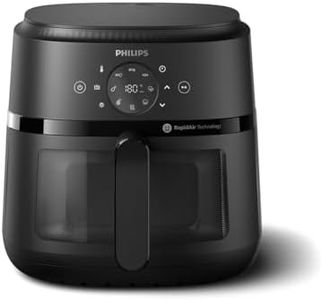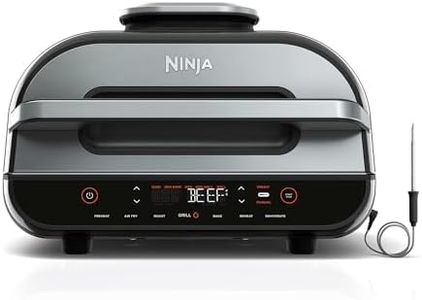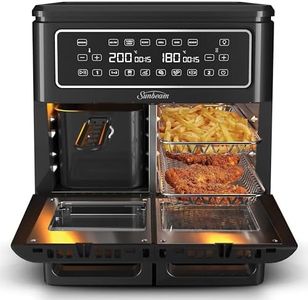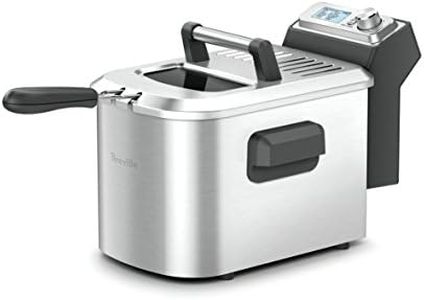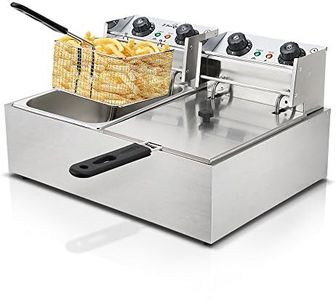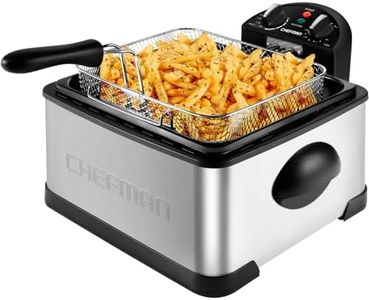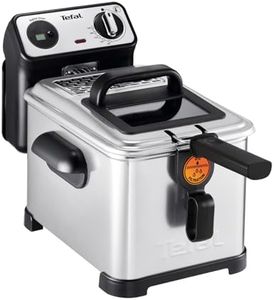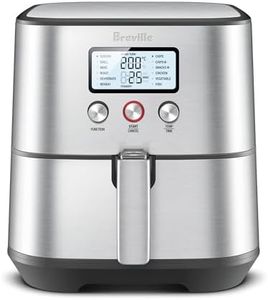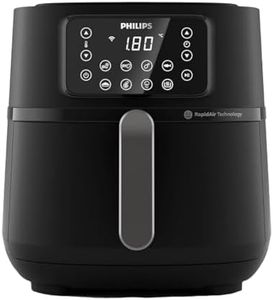We Use CookiesWe use cookies to enhance the security, performance,
functionality and for analytical and promotional activities. By continuing to browse this site you
are agreeing to our privacy policy
10 Best Deep Fryers
From leading brands and best sellers available on the web.Buying Guide for the Best Deep Fryers
Choosing a deep fryer requires understanding how frequently you’ll use it, the types of food you want to prepare, and your kitchen space. Deep fryers can bring crispy, delicious results with less mess than frying on the stovetop, but picking the right one can make your cooking easier and safer. Start by thinking about how much food you plan to fry at once and whether you want added features like filters or timers for convenience.CapacityCapacity refers to how much oil and food the deep fryer can hold at once. It is important because a small fryer won’t allow you to cook for many people quickly, while a large fryer can take up more counter space and use more oil. Models are usually divided into small (under 1 liter), medium (1–2.5 liters), and large (over 2.5 liters). If you cook for one or two people, a small to medium fryer is usually enough. For families or gatherings, a larger capacity helps you fry more in one batch.
Power (Wattage)Wattage determines how quickly the fryer heats up the oil and how well it maintains temperature during cooking. Higher wattage means faster, more even heating, which is good for crispier results. Deep fryers typically range from about 800 to 2000 watts. Lower wattage models might be slower and better for light, occasional use. Moderate wattage suits most home cooks, while higher wattage works best for heavy use or larger food portions.
Temperature ControlThis feature allows you to set and adjust how hot the oil gets. Accurate temperature control is key for frying different foods correctly without burning or undercooking. Some fryers have simple preset options, while others offer fully adjustable temperature dials, often between 250°F and 375°F (120°C–190°C). Adjustable controls give you the most flexibility, making it easier to fry a variety of foods to perfection.
Oil Filtration and DrainageSome deep fryers come with built-in systems to filter and drain oil, keeping it cleaner and making cleanup easier. This is important because reusing oil is common, and cleaner oil gives better tasting, less greasy results. Oil drainage also helps you safely and neatly dispose of used oil. If you fry foods often or want to reuse oil for longer, look for fryers with these systems; if you fry rarely, simple models might be enough.
Safety FeaturesSafety measures in deep fryers include cool-touch exteriors, automatic shut-off, locking lids, and breakaway cords. These reduce the risk of burns, oil spills, and overheating. If you have children at home, or if you plan to fry frequently, choosing a fryer with multiple safety features can give peace of mind and prevent accidents in the kitchen.
Ease of CleaningRemovable baskets, non-stick interiors, and dishwasher-safe parts all make cleaning up after frying much easier. Since oil can get messy, a fryer that comes apart and has washable components will save time and hassle. If you dislike cleaning oil, prioritize a fryer that emphasizes easy-to-clean features.
Size and StorageThis spec relates to the actual dimensions of the fryer and how easy it is to store when not in use. Compact models are easier to fit in small kitchens or cabinets while large models require more counter or storage space but can handle more food. Think about your kitchen size and where you’ll keep the fryer when picking the right size for your home.
